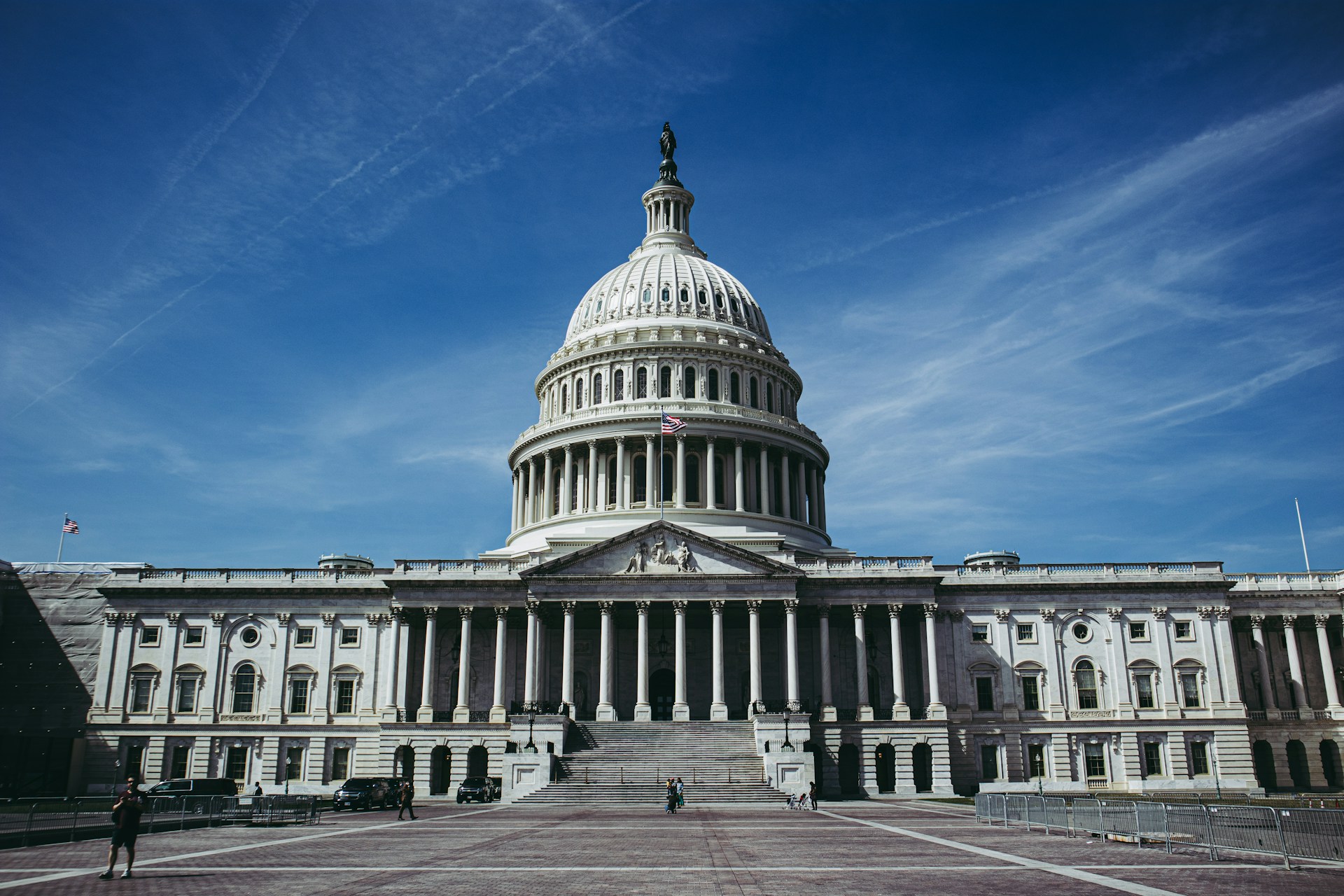View/Download this article in PDF format.
1. What is the Farm Bill?
The Farm Bill is a massive piece of legislation that guides food and farm policy. It covers wide-ranging topics from rural broadband service to farm subsidy payments. The most recent version of the Farm Bill contains 12 distinct titles, or various sections under which Farm Bill supports are organized. They include: commodity, conservation, trade, nutrition, credit, rural development, research, forestry, energy, horticulture, crop insurance, and miscellaneous (yes, its actual title is miscellaneous).
2. When and why was the Farm Bill created?
The first Farm Bill was passed in 1933 during the Great Depression to help increase low crop prices and address massive soil losses from the Dust Bowl. Since then, subsequent legislation was enacted sporadically until Farm Bills were passed in more regular intervals beginning in 1965.
3. Which government agency is responsible for carrying out Farm Bill programs?
Farm Bill programs are generally administered by the U.S. Department of Agriculture (USDA). State and local agencies help implement and manage certain conservation, nutrition, and rural development programs. Public-private initiatives also exist in research and crop insurance programs. For instance, crop insurance policies are sold and serviced by private insurance companies, but are subsidized by taxpayers and overseen by USDA’s Risk Management Agency.
4. Legislative Process: How are Farm Bill programs adopted/implemented/modified?
The Farm Bill is normally renewed once every five to six years leading some to argue that it focuses on short-term as opposed to long-term policy issues. The most recent Farm Bills were passed in 1985, 1990, 1996, 2002, 2008, and 2014. Farm legislation generally expires at the end of fiscal or crop (calendar) years, but since some programs retain permanent status, they continue indefinitely unless modified or deauthorized by Congress. Those with permanent status include crop insurance, farm subsidy, nutrition, and some conservation programs. Most of these programs are authorized to receive mandatory funding which, unlike discretionary funding, does not have to be approved by Congress on an annual basis. When a Farm Bill is passed, lawmakers place spending caps on discretionary programs and sometimes also limit the amount of mandatory funding that can be spent.
If lawmakers fail to pass new farm legislation or an extension of previous law, policies would revert to permanent law from the Agriculture Adjustment Act of 1938 and the Agricultural Act of 1949. This is because when modern-day Farm Bills are enacted, lawmakers do not repeal outdated laws and programs, but merely temporarily suspend permanent law for the life of the new Farm Bill. If permanent law went into effect, parity prices for loan programs would provide high price guarantees for growers of many commodity crops. But since certain crops like soybeans, peanuts, and pulse crops were not eligible for these programs in the 1930-40s, they would lose lucrative subsidies. Consumers would also pay more for milk since government policies would greatly inflate the price received by milk producers.
5. What are the different sections or titles of the Farm Bill?
The most recent Farm Bill proposals contain twelve titles, including the following:
- Commodity: crop-specific subsidies for specified crops such as grain, oilseeds, cotton, and rice (through price supports, marketing loan and disaster payments, and shallow loss subsidies) and other industry-specific programs for milk and sugar
- Conservation: conservation standards and payments for land stewardship and other conservation practices
- Trade: agricultural export and international food assistance programs
- Nutrition: domestic nutrition assistance programs like food stamps, emergency assistance, and healthy food initiatives
- Credit: subsidized direct loans and loan guarantees for agricultural producers
- Rural development: programs to boost rural economic development and subsidize rural housing, utilities, and broadband internet
- Research: spending on agricultural, food safety, and biotech research and extension programs
- Forestry: programs for forest protection, stewardship, and restoration
- Energy: subsidies for corn ethanol and next-generation biofuels, other forms of renewable energy, and energy efficiency initiatives
- Horticulture: programs for organic agriculture and specialty crops (like fruits, vegetables, and nuts)
- Crop Insurance: insurance premium subsidies for crop and livestock producers and administrative and operating subsidies for crop insurance companies, among others
- Miscellaneous: provisions related to socially disadvantaged farmers, livestock programs, and other miscellaneous topics
6. How much does the Farm Bill cost taxpayers?
The cost of federal Farm Bills has increased significantly over time. When the 2002 and 2008 Farm Bills were passed, they were projected to cost taxpayers $451 billion and $641 billion over ten years, respectively. The 2014 Farm Bill is expected to spend nearly $1 trillion, or double the cost from just a decade ago. Since reality seldom lines up with projections, the actual costs of recent bills have been even higher. For instance, the 2002 bill came in 30% over budget and the 2008 bill will be at least 40% over budget.
|
Ten-Year Costs of Federal Farm Bills, in Billions of Dollars |
|||
|
2002 |
2008 |
2014 |
|
| Projected cost after bill was passed |
$451 |
$641 |
$956 |
| Actual cost |
$588 |
$913 |
|
| Percent each bill is over budget |
30% |
42% |
|
| Percent increase from previous bill (projected costs compared) |
42% |
49% |
|
| Reference: Congressional Budget Office (CBO) | |||
The most costly sections of the Farm Bill, ordered from most to least expensive, include the following:
- Nutrition (80% of funding)
- Commodity (crop-specific subsidies) and federal crop insurance (14%)
- Conservation (6%)
- Everything else (trade, energy, horticulture, research, rural development, etc.) (1%)
Over time, costs have shifted between different sections of the Farm Bill. For instance, in the 2008 bill, farm subsidies in the commodity title were expected to cost about twice as much ($86 billion over ten years) as crop insurance ($47 billion). In just five years, the tables have turned. Crop insurance subsidies will now cost twice as much ($90 billion or more) as farm subsidies ($45 billion) over the next decade. This cost shift occurred for three primary reasons, including: (1) more generous subsidies for crop insurance due to legislative changes made in 2000, (2) less reliance on price-based supports after crop prices increased sharply after 2007, and (3) elimination of outdated direct payments. Unfortunately, taxpayers cannot expect to save much money even though farm businesses have had multiple years of record profits. The farm lobby convinced Congressional agriculture committees to expand federal crop insurance subsidies and include new shallow loss income entitlement programs in the 2014 farm bill, which may end up costing taxpayers much more than CBO projected. For more on “shallow loss” programs, see TCS’ Shallow Loss Program Update.
Several Farm Bill programs also contain hidden costs. Examples include U.S. sugar and milk policies which may not involve federal spending but raise costs of products for consumers.
7. Who benefits from Farm Bill programs?
Aside from recipients of nutrition assistance programs, the primary beneficiaries of Farm Bill programs are large farm businesses growing five main crops, including corn, soybeans, wheat, cotton, and rice. Since farm subsidy and crop insurance programs were originally written to satisfy a few special interests, it is no surprise that 90 percent of these subsidies go to growers of only five main crops. According to USDA, the largest farm businesses receive the majority of farm subsidy payments. In 2009, the top 12 percent of farm businesses took in 62 percent of all federal farm payments; the average payment to large, commercial farms (with annual sales over $250,000) was $31,700 while farms with lower sales received only $4,500 per year. Those reaping the most benefits also have incomes twice as high as the average U.S. household.
8. What are the most prominent changes to the Farm Bill?
Although U.S. farm policy has changed since its inception in the 1930s, the status quo still lives on. The government continues to play a major role in managing individual farm business risks. Special interests, primarily farm commodity groups, have ensured that expensive subsidies are paid out every year regardless of the state of the farm economy, national debt, or any other major economic indicator. The form of subsidy payments has evolved over time, though. For example, in 1996, Congress attempted to eliminate traditional farm supports by creating direct payments. This “temporary” subsidy lived on until its elimination in the 2014 farm bill (except for cotton “transition payments” for two additional years). Instead of putting all of direct payment savings toward deficit reduction, Congress spent most of the savings on new “shallow loss” income entitlement programs and expanded federal crop insurance subsidies, programs which are poorly understood outside of the powerful Agriculture Committees and farm lobby. For more on crop insurance, see Crop Insurance: A Federal Cash Assurance Program.
9. Why should taxpayers care about the Farm Bill?
The Farm Bill is in dire need of reform, particularly its commodity and crop insurance sections. The agricultural sector is much different than it was in the 1930s, yet U.S. policies have not conformed to these changes. Over time, government involvement in U.S. agriculture has caused programs to become duplicative, work at cross-purposes, benefit special interests at the expense of others, result in unintended consequences, violate international trade rules, and take risk out of farming. Farm Bills have become so wasteful and bloated that the 2014 bill is expected to cost taxpayers a trillion dollars over the next decade. With record national debt and a profitable farm sector, now is the time to take a step back and reevaluate the government’s role in American agriculture.











Get Social